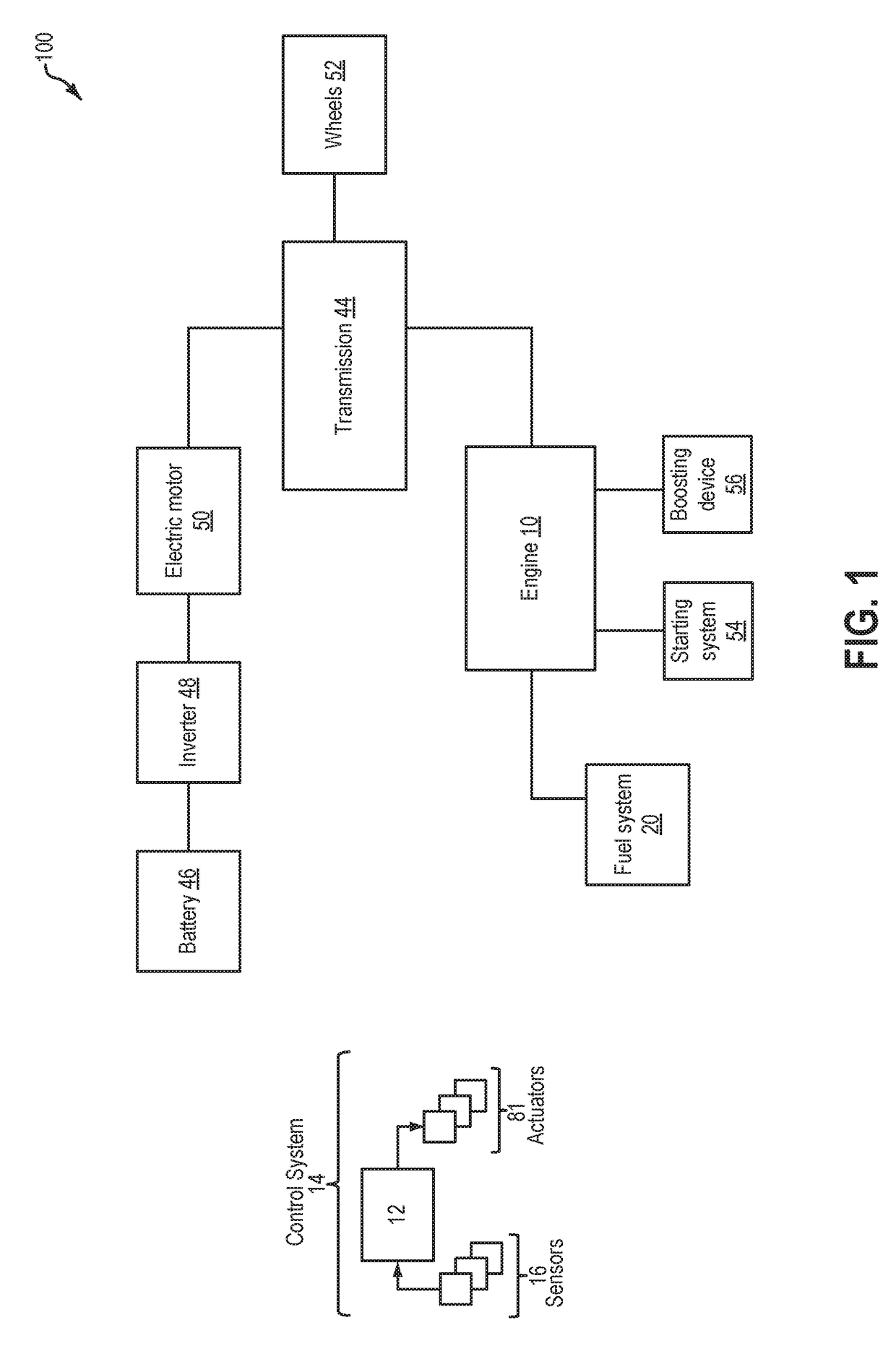Methods and systems for surge control
a turbocharger and surge control technology, applied in the direction of gas pressure propulsion mounting, transportation and packaging, propulsion parts, etc., can solve the problems of nvh problems, compressors are prone to surge, so as to reduce forward flow through the compressor, improve peak power output, and increase fuel economy
- Summary
- Abstract
- Description
- Claims
- Application Information
AI Technical Summary
Benefits of technology
Problems solved by technology
Method used
Image
Examples
Embodiment Construction
[0016]The following description relates to systems and methods for addressing compressor surge in a boosted engine system, such as the system of FIG. 2, configured in a hybrid electric vehicle, such as the vehicle of FIG. 1. A controller may be configured to perform a control routine, such as the routine of FIG. 3, to increase usage of motor torque in anticipation of compressor surge so as to deplete an energy storage system to a lower state of charge. During the incidence of surge, the controller may then adjust engine actuators to limit engine torque to a level where compressor flow is moved away from a surge limit (FIGS. 4-5). An example adjustment is shown with reference to FIG. 6. In this way, motor torque usage for mitigating surge can be improved.
[0017]FIG. 1 depicts a hybrid propulsion system 100 for a vehicle. In the depicted embodiment, the vehicle is a hybrid electric vehicle (HEV). Hybrid propulsion system 100 includes an internal combustion engine 10. Engine 10 is coupl...
PUM
 Login to View More
Login to View More Abstract
Description
Claims
Application Information
 Login to View More
Login to View More - R&D
- Intellectual Property
- Life Sciences
- Materials
- Tech Scout
- Unparalleled Data Quality
- Higher Quality Content
- 60% Fewer Hallucinations
Browse by: Latest US Patents, China's latest patents, Technical Efficacy Thesaurus, Application Domain, Technology Topic, Popular Technical Reports.
© 2025 PatSnap. All rights reserved.Legal|Privacy policy|Modern Slavery Act Transparency Statement|Sitemap|About US| Contact US: help@patsnap.com



